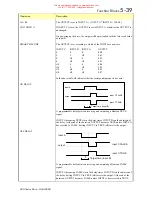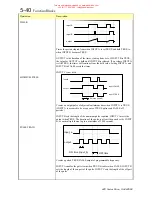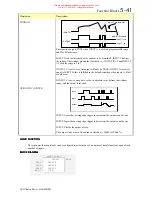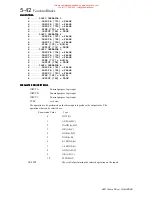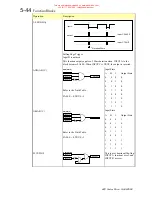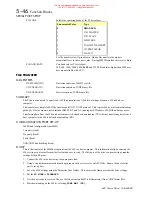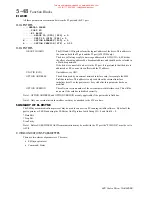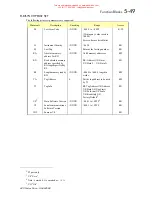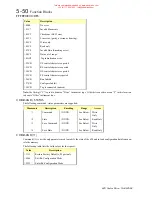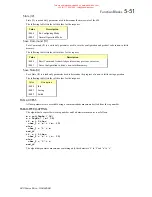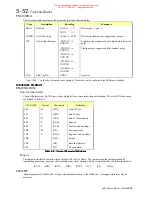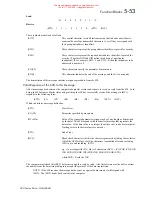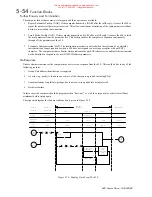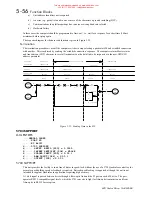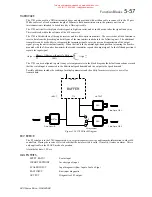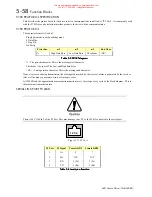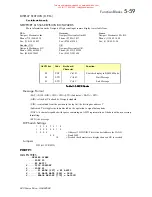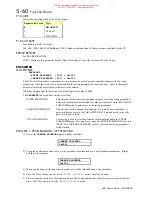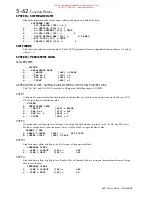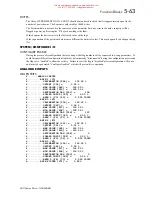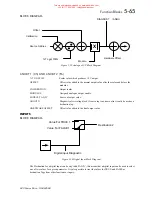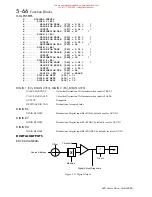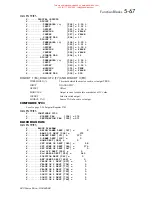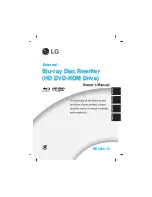
8085#
)XQFWLRQ
#
%ORFNV
953#
9HFWRU
#
'ULYH
#0#
+$
7968;7
(1&2',1*
The following table summarises the parameter types and their encoding:
Type
Description
Encoding
Comments
BOOL
Boolean
FALSE
>00
TRUE
>01
Will accept
>0
and
>1
WORD
16-bit Bit-string
>0000 to >FFFF
Will accept leading zero suppression, except
>0
INT
16-bit Signed Integer
-XXXXX. to
XXXXX.
-XXXX.X to
XXXX.X
-XXX.XX to
XXX.XX
-XX.XXX to
XX.XXX
-X.XXXX to
X.XXXX
Leading zeroes suppressed upto digit before decimal
point.
Trailing zeroes suppressed after decimal point.
TAG
Link Tag No.
XXXX.
As above.
Note - The “.” in the above formats is not optional. It must be sent to conform to the EI-Bisync standard.
0(66$*(
#
)250$7
5($',1*
#
'$7$
&RQWURO
#
&KDUDFWHUV
Control Characters are ASCII binary codes which define actions rather than information. The six ASCII codes used
are defined in Table 5.2.
ASCII-HEX
Control
Mnemonic
Definition
02h
^B
(STX)
Start of Text
03h
^C
(ETX)
End of Text
04h
^D
(EOT)
End of Transmission
05h
^E
(ENQ)
Enquiry
06h
^F
(ACK)
Positive Acknowledge
0Dh
^M
(CR)
Carriage return
15h
^U
(NAK)
Negative Acknowledge
1Bh
(ESC)
Escape
1Eh
(RS)
Record separator
1Fh
(US)
Unit separator
7DEOH
#815#0#
&RQWURO
#
&KDUDFWHU
#
'HILQLWLRQV
7DEOH
#815#0#
&RQWURO
#
&KDUDFWHU
#
'HILQLWLRQV
7DEOH
#815#0#
&RQWURO
#
&KDUDFWHU
#
'HILQLWLRQV
7DEOH
#815#0#
&RQWURO
#
&KDUDFWHU
#
'HILQLWLRQV
(QTXLU\
The computer initially has master status with the 620 in slave status. The computer begins communication by
transmitting a message, known as the "establish connection" message, which is represented by the following format:-
(EOT)
(GID)
(GID)
(UID)
(UID)
(C1)
(C2)
(ENQ)
(;$03/(
=
Read mnemonic II at address 00, using a terminal emulator key in the following. A carriage return may also be
necessary.
This manual was downloaded on www.sdsdrives.com
+44 (0)117 938 1800 - [email protected]


